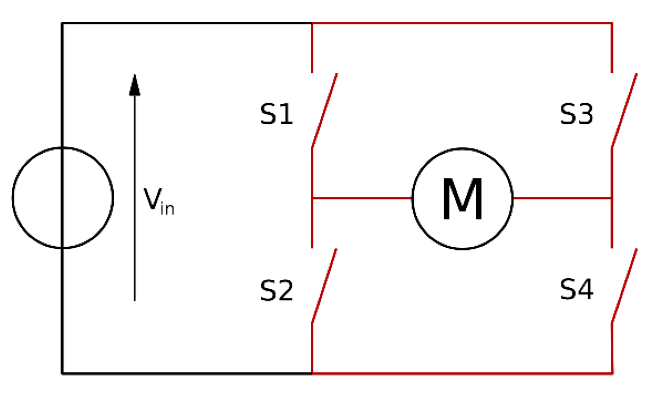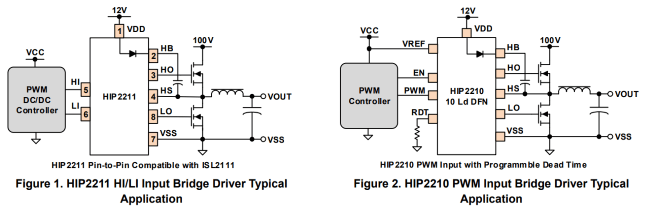Renesas Releases High-Performance Half-Bridge
20-07-2020 | By Robin Mitchell
Renesas announced their latest half-bridge MOSFET drivers with up to 100V operation. What are half-bridge drivers, why are they important, and what features do the Renesas devices provide?
Half-Bridge and Full-Bridge Drivers
A half-bridge circuit, at its essence, is a push-pull driver consisting of two transistors. Some arrangements use a P and N-type transistor to minimise the complexity in driving (as both inputs to the transistors can be connected), while others utilise two N-type transistors. While using two N-type transistors requires the use of a particular gate driver (as one needs to be turned off when the other is turned on), the arrangement allows for larger currents as N-type devices have approximately a third of the resistance of P-type devices. All transistor technologies can be used to create a bridge, but MOSFETs are generally preferred due to their ease of driving. Two half-bridge drivers can be combined to create a single full-bridge driver which can be used to change the polarity of a power source to a device. This is particularly useful in DC motor applications where the direction of the motor can be changed electronically, and braking can be achieved by shorting the motor to itself.

Renesas releases 100V half-bridge driver
Renesas, a company that specialises in advanced semiconductors, has today announced the introduction of their two latest half-bridge devices; the HIP2211 and the HIP2210. The two drivers, while differing in capabilities, are both able to drive up to 100V (with an absolute maximum of 120VDC). To keep in line with compatibility, the HIP2211 MOSFET driver is pin-compatible with the ISL2111 bridge driver, a popular bridge driver also produced by Renesas. The HIP2210, however, offers a tri-level PWM input to help reduce the complexity of designing power and motor control systems. The ability for the drivers to operate at high speeds and high-power environments (with -10V tolerate pins and 50V/ns slew), makes them suitable for a wide range of applications from power applications. The drivers also feature under-voltage protection as well as a programmable anti-shoot through protection system which guards the driver against fault conditions. The HIP221x drivers can source 3A, sink 4A, have a 15ns propagation delay, and are matched within 2ns of each other, helping reduce the power consumption as well as operate in high-frequency domains. The driver family is also designed to work in tandem with Renesas microcontrollers in DC brushless power applications. The HIP2211 is available in an 8-lead SOIC package and a 10-lead 4mm x 4mm TDFN package, while the HIP2210 is available in a 10-lead 4mm x 4mm TDFN package only.
Key Features
-
115V DC maximum voltage with 120V absolute maximum
-
VDD operational range of 6V to 18V
-
Up to -10V tolerance
-
Integrated 0.5Ω removes the need for external diodes
-
Integrated programmable delay timer to prevent shoot-through
“The innovative HIP221x devices continue our 25-year heritage of developing industry-leading Harris Intelligent Power (HIP), half-bridge drivers. Robust noise tolerance, ultra-fast propagation delays, and high system efficiency are some of the key features our customers have come to rely on from our entire range of HIP half-bridge MOSFET drivers.”
-
Philip Chesley, Vice President, Industrial and Communications Business Division at Renesas.
The HIP2210 can be evaluated with the HIP2210EVAL1Z which integrates all the components needed to use the HIP2210, including an inductor, capacitors, and MOSFETs. The board only requires an input power source and signal to operate the HIP2210.


